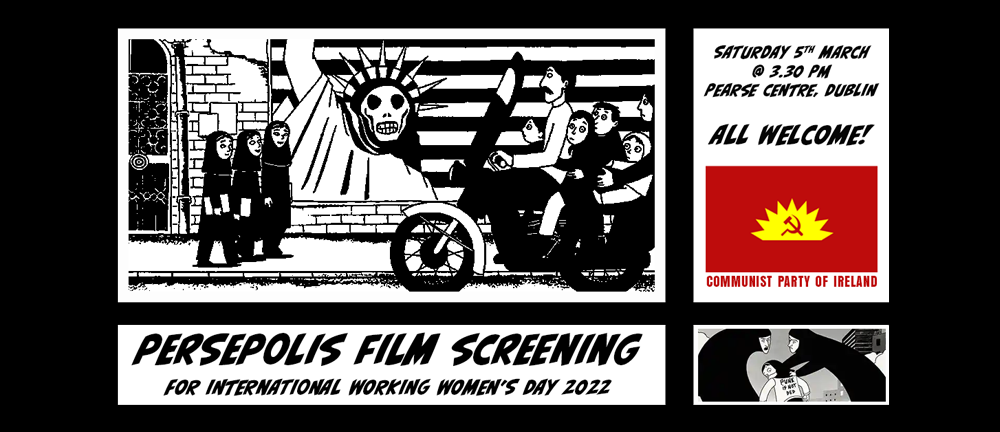Based on Marjane Satrapi’s autobiographical graphic novel of the same name, the film Persepolis follows a young girl as she comes of age against the backdrop of the Iranian Revolution.
The film moves from her early childhood in secular 1970s Iran, where Marji’s deepest desire is to be the next prophet, to the 1980s, where Marji now plays at being Che and Fidel and has nighttime conversations with Marx. As the last shah is sent into exile, she learns she would not be the first communist revolutionary in her family. Friends and family members return from the now-deposed shah’s prisons to regale those who had been left behind with tales of their survival.
These joyful scenes of reunion soon sour, though, as the same friends quickly disappear back into jail or just disappear from the new theocratic Iran. Marji is forced to take the veil, is separated from her boy schoolmates, and begins her own journey of personal rebellion. She, like many others who could, is eventually forced to decamp for the west, in this case Vienna.
This transition for her is lonely, difficult, and fraught with identity and cultural clashes and reinvention, as is her eventual return to Iran. Back in Iran, she learns that she is not alone in her fight back. While never formally taking up struggle against the regime, Satrapi showcases the many ways for a person to win little victories, as well as showing us how easy it can be to win those at the expense of others.
While the film deals with the heavy and difficult subjects of violent political upheaval, betrayed revolutions, and the tragic human cost of violence and war, it is not a story of misery. Rather this film is a very personal telling of a colourful life in very complicated circumstances. Moments of grief, sadness, anger and loss mingle with those of joy, hilarity, love, family and human connection. Satrapi can only offer her own point of view in such a personalised work, but it is not dogmatic. She has a clear side throughout the piece, but while mocking and highlighting the hypocrisy of the religious guardians it is also worth noting that Satrapi does not pull her punches in regard to the enlightened left either.
During a scene from her childhood in Tehran, Satrapi makes it clear that her solidly bourgeois left-wing parents may be progressive on a great many things but they still uphold and benefit from their own social class and at times will defend it. This hypocrisy is played out again in Vienna with her coddled anarchist friends. The west is no haven for Satrapi, and the moments of isolation and ill health captured during this period in her life leave the viewer with a very clear anti-capitalist message.
Presented in black and white, the style mirrors that of the original comics. This, Satrapi explained, was an intentional choice, so that the place and the characters would not look like foreigners in a foreign country but simply people in a country. The story may take place in Iran but, given the right conditions, it could be anywhere.
Persepolis had its premiere in 2007 at the Cannes Film Festival, where it jointly won the Jury Prize. It was nominated for Best Animated Feature at the 80th Academy Awards and has continued to earn universal praise from critics and audiences alike.
■ A free and child-friendly screening of Persepolis has been organised by the CPI Women’s Committee, to take place on the 5th of March in the Pearse Centre in Pearse Street. Doors open at 3:30 p.m., and the film starts at 4 p.m. Refreshments will be provided, and all are welcome. The film is rated PG-13 and has a running time of 1 hour and 36 minutes.
■ Copies of the book Persepolis: The Story of a Childhood and Persepolis 2: The Story of a Return are available in Connolly Books, and on line at connollybooks.org, for €12.






